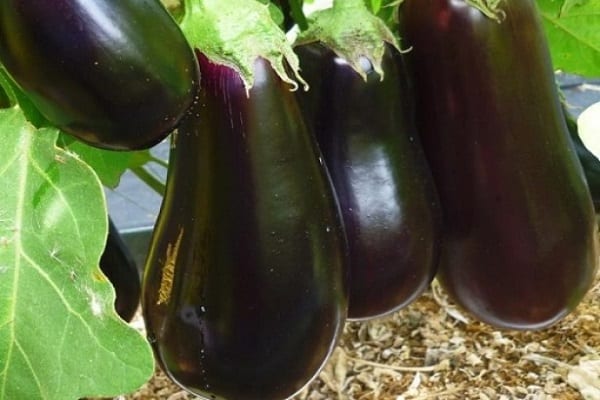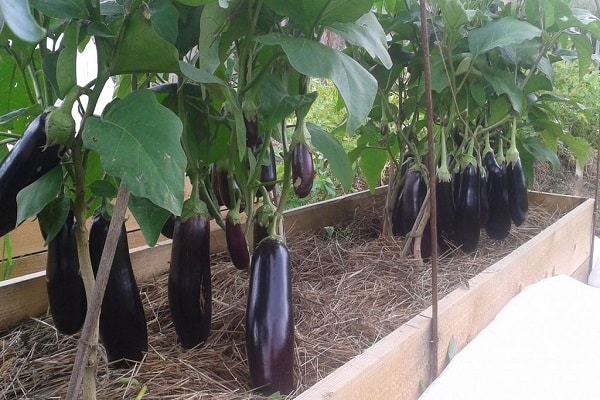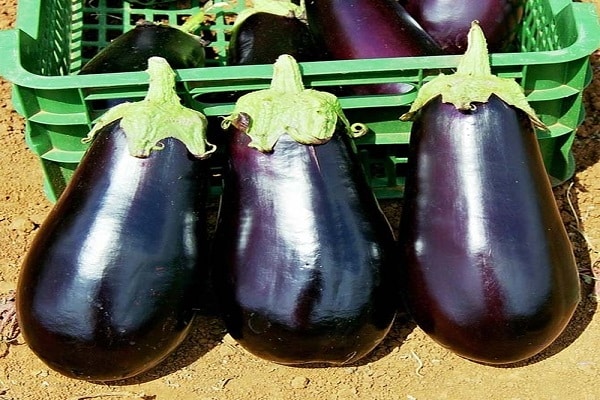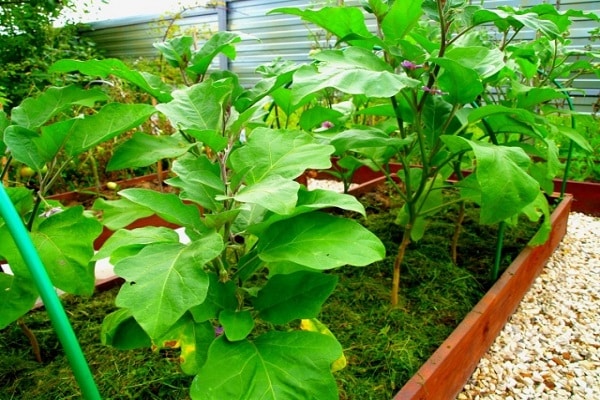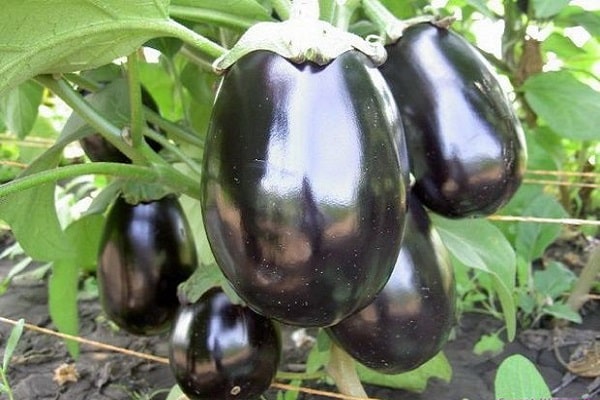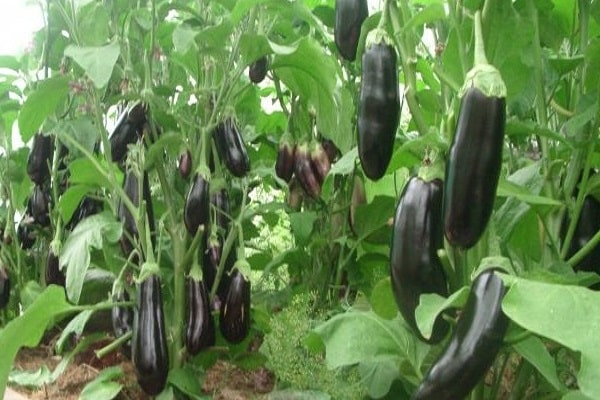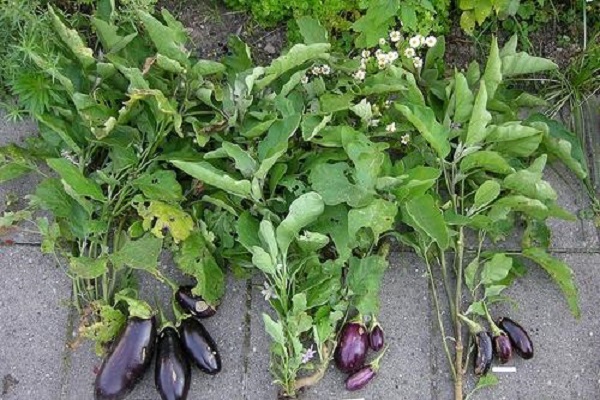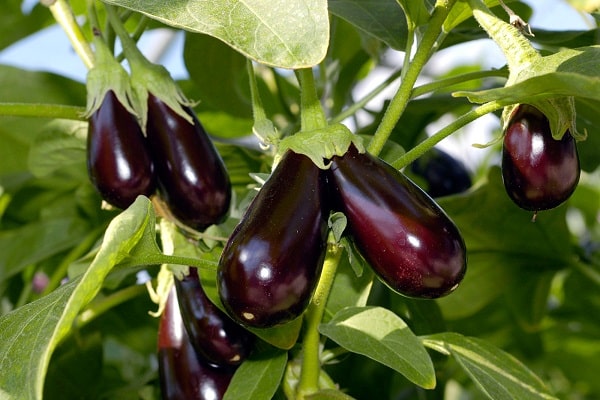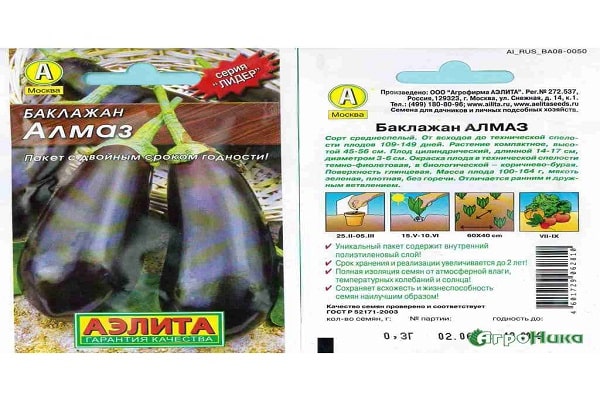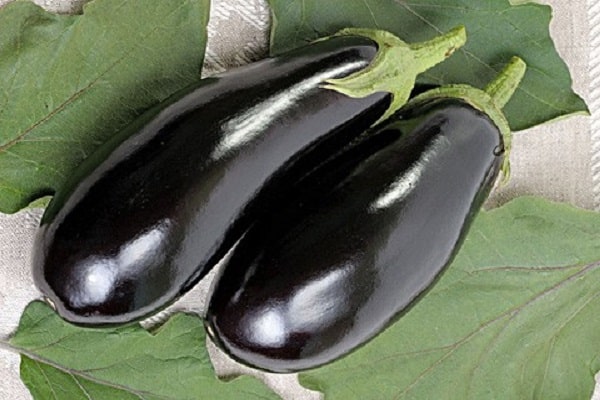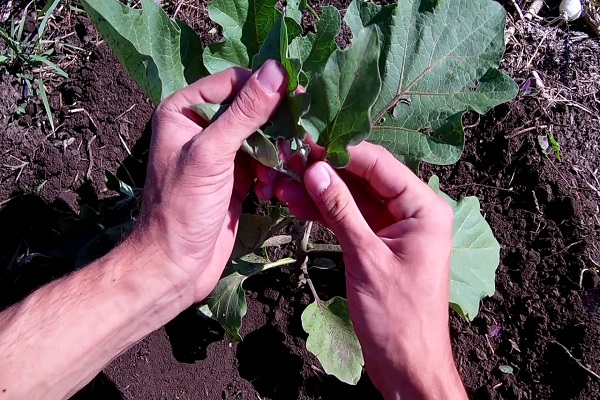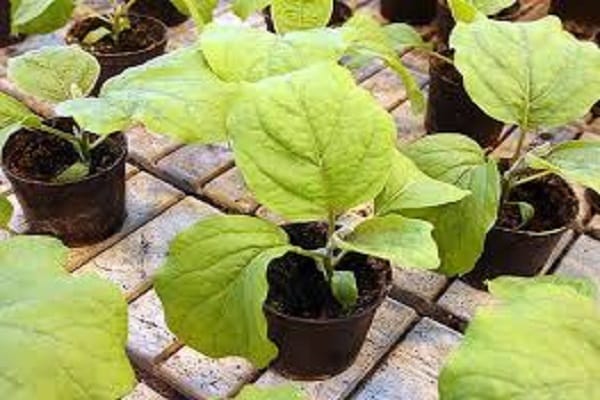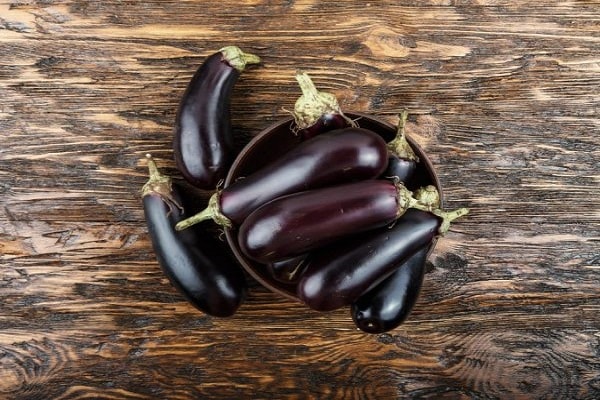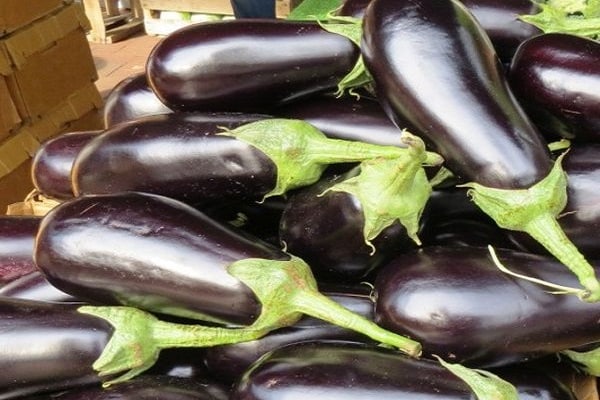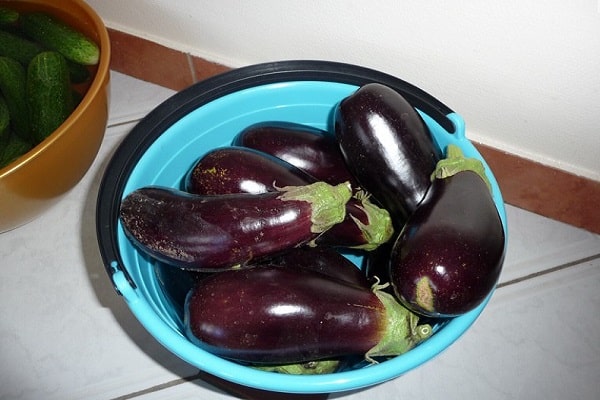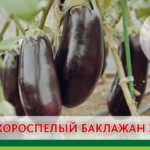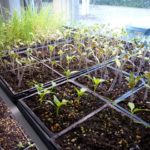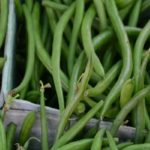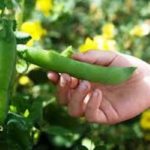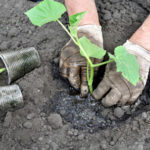Eggplant is a vegetable plant that is grown in summer cottages. The eggplant variety Almaz is an unpretentious and non-capricious crop. By providing proper care, gardeners receive a rich harvest. The vegetable has an exotic color and is used in the preparation of first and main courses. Excellent taste, content of macroelements and vitamins, low calorie content have made eggplant one of the most favorite vegetables.
- Description and characteristics
- Advantages and disadvantages
- Rules for growing a plant
- Landing dates
- Preparing the soil for planting
- Seed preparation
- Soak
- Top dressing
- Hardening of seeds
- Sowing
- How to care for culture
- Watering
- Top dressing
- Hardening
- Transfer
- Protection from diseases and pests
- Harvesting and storage rules
Description and characteristics
Diamond is a proven eggplant variety. It is considered reliable and versatile compared to other types. Residents of warm regions grow vegetables in open ground. If it is a city with a cold climate, greenhouses or greenhouses are used. Characterized by mid-season ripening.
It can reach a height of 65 cm. Eggplant fruit formation occurs in the lower part of the stem. The calyx of the vegetable has a light green tint. It is not covered with thorns, which makes the harvesting process easier.
Diamond produces fruits of a classic oblong shape. The length of eggplant ranges from 13 to 18 cm, its diameter reaches 6 cm. It has a pleasant taste of pulp, which is covered with a dense skin on top. The flesh is beige in color with a green tint and is devoid of bitterness. The variety is suitable for preparing hot dishes, snacks and preserves.
Advantages and disadvantages
Among the advantages are:
- ease of care;
- excellent taste;
- excellent technological properties;
- transportability over long distances;
- high yield.
Compared to the advantages, the disadvantages of eggplant do not seem so serious. The lower fruits are in contact with the ground. As a result, a light spot is formed, under which there is hard pulp. Each vegetable has a large number of seeds, which some people smell in their food.
Rules for growing a plant
Vegetables can be grown in two ways - seedlings and sowing in the ground. The first option is considered the most effective for eggplant. If you sow seeds in open soil, you may not get a harvest due to weather conditions. The ripening period of the fruit is also taken into account.
Landing dates
Work with planting material usually begins in the second half of winter.Planting in open ground is carried out after the age of the eggplant reaches 65-70 days. Start growing in open ground after late frosts. In addition, the soil must warm up well for the eggplant seeds to sprout strongly.
Preparing the soil for planting
Land for vegetables can be purchased at a specialized kiosk. She has already undergone the disinfection procedure and does not need preparation. The soil is saturated with nutrients and loosening substances. If it’s not difficult for a person, you can start preparing the land yourself.
Soil for eggplant is collected from a plot of land on which vegetables and fruits grow. Forest soil collected near the village is also suitable. The collected amount is mixed with peat or sawdust and humus. The last component is wood ash. You will need a glass for a bucket of mixture.
The earth is the habitat of insects and their larvae. Before sowing eggplant seeds it needs to be disinfected. This can be done in any available way:
- heating in the oven or microwave;
- steaming in a water bath;
- pouring boiling water;
- processing in the oven or on the grill.
Using the heating procedure, you can destroy harmful insects, fungi and the remains of parasitic plants. After heat treatment, wait until the soil cools completely. After this, the earth is left alone for 7-10 days. During this time, the soil rests and beneficial microflora is restored.
Seed preparation
One drawback that should be mentioned here is the large number of seeds in the fruits. On the other hand, this feature of Almaz makes it possible to collect seed material for sowing the next season on your own. To improve the germination of eggplants, it is recommended to prepare them.
Soak
For the procedure, ordinary potassium permanganate is suitable.The solution should have a light pink tint. Eggplant seeds are immersed in warm liquid for 20-25 minutes. After this, the solution is drained and the seeds are washed with running water.
Top dressing
The method has a positive effect on germination. It is necessary to prepare a nutrient medium. As a rule, this can be a special preparation or wood ash. For 1 liter of water you will need 1 tsp. fertilizers The seeds are soaked in it and left for 24 hours.
Hardening of seeds
Hardening has a positive effect on the further growth of young plants. After processing the planting material, it is placed on gauze and allowed to dry a little. Eggplant seeds are placed in the lower sections of the refrigerator for a day. Then the hardening procedure is repeated and the seeds are placed in the refrigerator again. As soon as the stage is completed, the seeds are immediately planted in the ground.
Sowing
It is recommended to sow seeds in separate cups. The Almaz eggplant variety does not tolerate picking well, and this approach will protect it from unnecessary stress. The fragile root system of eggplant can be damaged during picking, as the seedlings have to be separated from each other. Growing in separate containers has a positive effect on the seedlings themselves; they turn out strong and healthy.
2 or 3 grains are planted in each glass. This is a kind of reinsurance, since not everything sprouts. If 2 or 3 sprouts appear, choose the strongest one for further transplantation. Eggplant seeds can be planted in large containers. At the same time, maintain a distance of 6-7 cm between landing sites.
The seed material is immersed in the soil to a depth of 2 cm. In order for seedlings to appear as early as possible, certain conditions are created. In the room where the future seedlings are located, the temperature is set to 22 °C. Cover the top with film to create a greenhouse effect.
How to care for culture
Greenhouse conditions are abandoned when seedlings appear. For normal shoot development, the temperature is reduced to 15 °C. A low rate will slow down the stretching of eggplant stems and help the root system to form. After 1-2 weeks, the temperature is increased to continue the development of the aboveground part of the plant.
Watering
Seedlings, just like adult plants, need regular watering. It is better to take settled water, but not too cold. The watering procedure is carried out as the earthen clod dries out. As practice shows, once every 3 days is enough.
Top dressing
In addition to watering, young eggplant sprouts need fertilizer. Feeding is carried out every 2 weeks. Urea is used for organic growth. Potassium is indicated when the green part is sharply stretched. As a top dressing, you can use organic fertilizers: mullein, bird droppings, slurry.
Hardening
Diamond is an eggplant variety that is not particularly demanding. But before planting in the ground, preliminary hardening of young seedlings is necessary. The procedure is simple and does not require the use of any tools. The gardener needs to take pots of herbs outdoors.
The first eggplant hardening procedure takes 15 minutes. Every day the interval is increased by 2-3 minutes. Weather conditions outside must be favorable so as not to freeze the crop. Warm air and sun rays are another requirement.
Transfer
The plant will better tolerate transplantation and take root in a new place if it has at least 5 leaves. With the appearance of this number of leaves, sufficient development of the eggplant root system occurs.After the sprouts appear, count 70 days and transplant the crop into open soil. The landing time falls at the end of May and continues until the beginning of June.
This period is favorable for planting, as the ground has time to warm up and there are no frosts. Before planting seedlings, water the soil, loosening it. The root is deepened by 7 cm, planting the sprouts in rows. Between plants you need to maintain a distance of 30 cm, and between rows - 65 cm. Per 1 sq. m of soil, it is enough to plant 6 eggplants.
Protection from diseases and pests
Eggplant Almaz is rarely affected by plant diseases. The most dangerous pest for vegetables is the Colorado potato beetle. Being in the larval stage, it quickly affects the green mass of the crop. Rows with young seedlings occasionally suffer from spider mite infestation.
The pest actively reproduces in regions with a humid climate and high air temperatures.
Slugs cause massive damage to crops, gnawing not only leaves, but also shoots. The least affected species are aphids, mole crickets and whiteflies. Periodic treatment of eggplant with insecticidal preparations protects the bushes from pests. The soil also needs disinfection. The row spaces are sprinkled with slaked lime or wood ash.
To reduce the number of treatments of plants with chemicals, competent preventive measures are carried out and the stages of agricultural technology are followed.
Harvesting and storage rules
The fruits are ready for picking when they turn dark purple. You need to constantly remove eggplants from the garden because the crop only partially ripens. Garden scissors or pruning shears are suitable for cutting Diamond. This will allow you to carefully remove the fruits without damaging the bush.
Eggplants should not be left on the branches if they have already ripened.Overripe fruits change skin color from purple to brown. After this, the eggplants become poisonous. Eating such fruits causes digestive problems and negatively affects the ENT organs.

